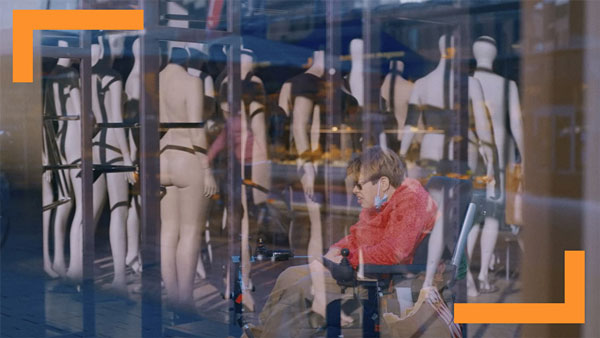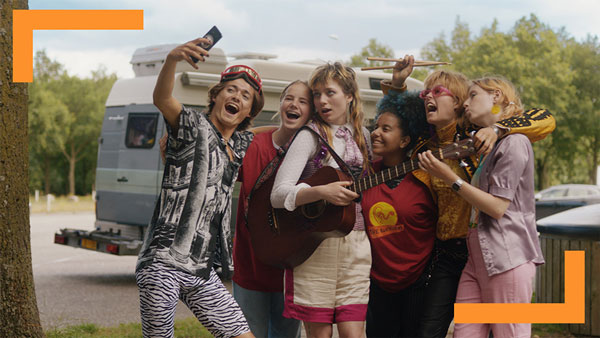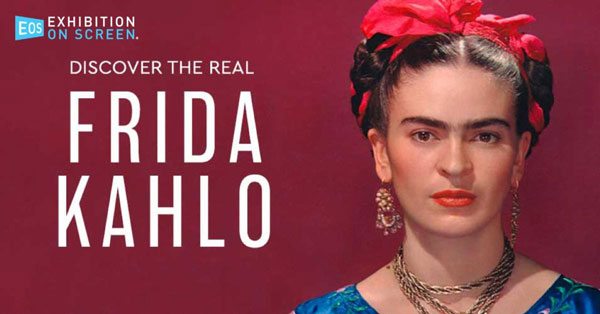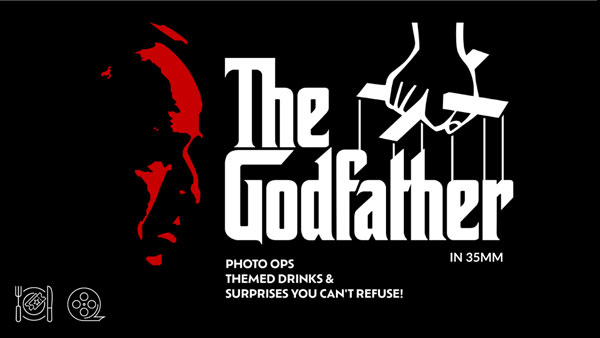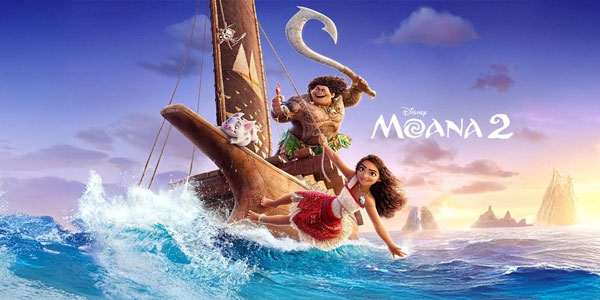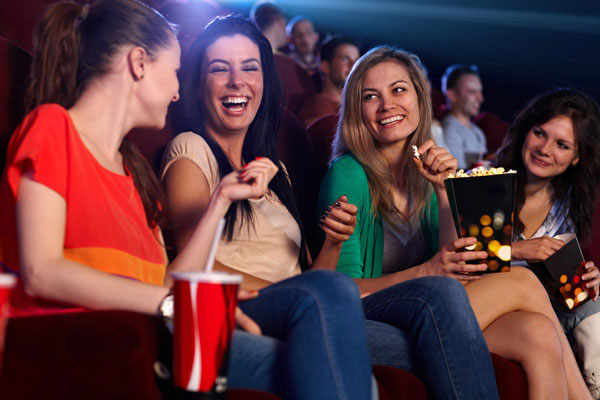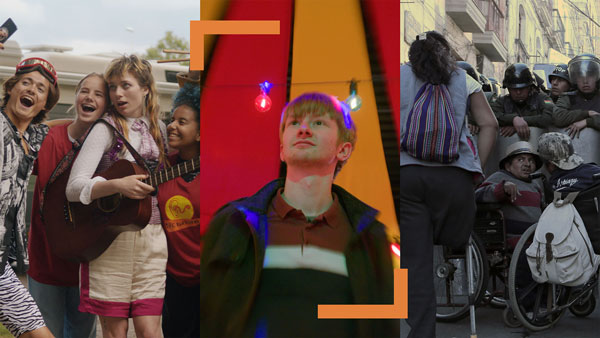By Al Nigrin
originally published: 02/14/2023
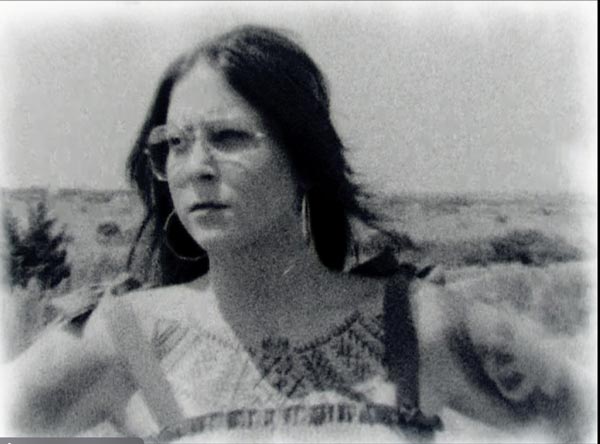
Still from broken home movies
Now in its 35th year, the United States Super 8mm Film & Digital Video Festival is the largest and longest running juried festival of its kind in North America. The festival encourages any genre (including animation, documentary, personal, narrative, and experimental) made on Super 8mm/8mm film, Hi 8mm/8mm, or digital video. The Festival will be held Online and In-person at Rutgers University on February 18+19, 2023.
Super 8mm film was introduced in 1965 by Eastman Kodak at the World’s Fair in New York to help the average person document their everyday lives. Super 8mm was most widely used for filming home movies between the mid 1960s till the early 1990s. Today amateur usage of Super 8mm has been replaced by digital video but the format is still regularly used by filmmakers, artists, and students. Some hope to imitate the look of old home movies. Others want to create alternative looks for flashback sequences and altered states of consciousness. Some just like the idea of creating images in the classic style of using actual film. Super 8mm is a relatively inexpensive film, making it popular among filmmakers working on a low budget who still want to achieve the look of real film. Super 8mm has become quite common in theatrical features. J.J. Abrams 2011 film Super 8 pays homage to the little film format. Guy Maddin’s surreal 2006 film Brand Upon the Brain and Jim Jarmusch’s 1997 film Year of the Horse -- a documentary on Neil Young’s band Crazy Horse -- use it too.
I fell in love with Super 8mm when I started making films in 1982. I liked the fact that you were pretty much in control of every aspect of the filmmaking process. I could even develop the film myself. It was the DIY aspect of Super 8mm that first lured me in, but it was the grainy, oneiric (dreamlike) quality of the film stocks that sold me on this format. I have since made over 30 short (mostly experimental) films using Super 8mm. I started touring my work and showing it all over and then met two of the biggest Super 8mm film supporters in the USA. They are the husband and wife team of Bob Brodsky and Toni Treadway. They founded and ran the International Center for 8mm Film and Video in Massachusetts for over 30 years. Through their non-profit organization they subsidized many Super 8 filmmakers by sending them to film festivals in the USA, England, France, Venezuela, Brazil, Canada, and others. It was thanks to them that I got to visit so many wonderful festivals and countries. The largest United States-based Super 8mm Film Festival in the 1970s and 1980s was the one in Ann Arbor, Michigan. Bob and Toni sent me there to show a package of experimental films that I had curated in 1986 but by 1988 the people who ran this legendary festival decided they were going to cease operations. Bob and Toni suggested that I create one at Rutgers since I had set up the Rutgers Film Co-op/New Jersey Film Festival back in 1982. So, I did and called it the United States Super 8mm Film Festival. The first of these was a curated program where I invited Super 8 filmmakers that I admired to screen their work but the 34 that followed were juried festivals where a panel of judges picked the winners. The Festival has changed over the last 3 decades going from screening Super 8mm films exclusively to then including Hi 8mm videos and now digital videos. Also, for over the past two decades Pro 8mm based in Burbank has been a major sponsor of this Festival. They provide a wide variety of Super 8 services and film stocks for filmmakers. I thought it would be nice to ask some of the filmmakers who are Official Selections in the 2023 United States Super 8mm Film & Digital Video Festival to talk about Super 8 and the films they are showing at this year's program. The filmmakers that I spoke to are: Heidi Van Horne, Director of broken home movies from Buda, Texas; John Heins, Director of From Above from Broomfield, Colorado; MaLo Sutra Fish, Director of Scum Show from Paris, France; and Allison Radomski How To Behave At A Party from Longmont, Colorado.
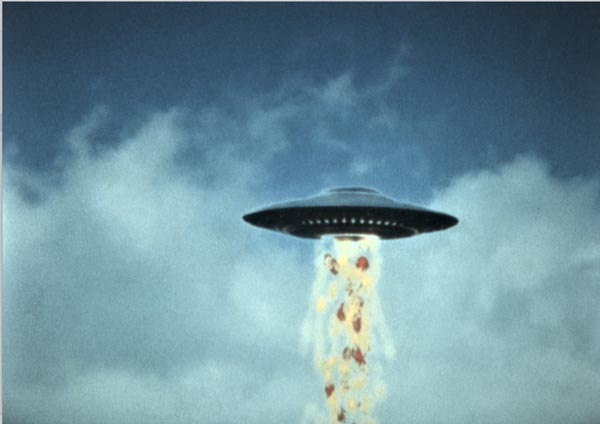
Still from From Above
Nigrin: Tell us about your film that is a finalist in the 2023 United States Super 8mm Film & Digital Video Festival and why you decided to make it.
Horne: broken home movies is an exploration of the choice of motherhood. I wanted to explore the feelings of making that choice, confliction, regret, and how the options for women for family planning have changed and affected that choice over previous generations. When it began, it was largely based around my own choice of not taking a traditional route to family and motherhood, and how it would have been to deal with the decisions in past eras. After shooting was done and I was in the editing stage, the Dobbs decision came down, and that very much negatively affected my outlook on the topic, especially since I had recently relocated to Texas. Suddenly some of what were wistful moments gave way to eerie foreshadowing and creepy tones instead. The tone changed for me in that moment and the music choices went darker pretty quickly. The concept didn’t change, but the final message became even more clear.
Heins: I originally made this film for the ENS8 Film Festival in Zurich. It is similar to the Straight 8 festival in London where you make a film on one cartridge of Super 8 with only in-camera editing and then make a soundtrack without seeing the film.
MaLo Sutra Fish: OSEES’s Scum Show Official Music Video is first and foremost a gift. A gift made to a band, a band making a gift to a filmmaker, and a venue making a gift to both. Initially I was inspired by Sally Walker-Hudecki’s super 8 films (www.overandoutfilms.com), which consisted of her going to live music shows and capturing performances on Super8 then editing them into music videos. I have always loved capturing live shows and have started to do music photography back in 2006. I had always wanted to pursue this photographic work with films and video. But that’s not how it actually started, it’s only one aspect. I had finally gone to an OSEES concert in November 2021, for which I had already gotten in touch with their booker to ask them if I could take photos. This band is remarkable for their live performance, the energy, the stamina and endurance are as mind blowing as the music quality delivered systematically in every of their shows. When I heard about their June ’22 gig, I decided I wanted to capture 4 rolls worth of Super 8 Kodak Tri-X and share it with the band, and perhaps offer to do something with it if the images were good. So, I got in touch with their booker once more and asked if I could bring a couple of Super 8 cameras as well as a 135mm point and shoot, which got green lighted immediately. The venue’s team was also very nice and let me circulate with ease in the venue, as well as OSEES touring crew, especially Delaney Schenker. After the show, I got in touch with John Dwyer and once the films processed offered OSEES to make a music video for one of the tracks from their latest album A Foul Form (released in Aug. 2022), free of any charge; a gift from a fan who happened to be a filmmaker. John, who is truly a great person, very genuine, but also a fan of films and celluloid, was immediately on board and always available for any communication. He also let me choose the audio track. The same can be said for the communication with their European Bookers U-Turn and Vedettes, as well as Chris Gioanni in charge of concerts at Le Trianon (Paris, FR.). Everyone was very approachable and provided positive feedback and enthusiasm. I am truly grateful for this collaboration; it was a fantastic ride from start to finish.
Radomski: How to Behave at a Party began as a playful experiment. Most of the footage in that short is from film that I distorted and developed at home. A few years ago, I’d just purchased my first Super 8 camera from eBay, and I decided to test it out by filming a gathering with my friends. Around that same time, I was really getting into the process of “souping” my film, which involves soaking film in various substances to get delightfully distorted results. Although I’d experimented with making film soup for 35mm still photography film, I hadn’t done it with motion picture film and I decided to give it a whirl with this party footage. Since Super 8 film comes in its own little cartridge, it’s really easy to just dunk the whole thing in a bowl of beer, and then let it all dry out. I don’t remember all the ingredients that I used for this particular film soup, but I know it included beer, wine, cleaning chemicals, and some gel silica. After the film had dried out, I jammed all 100 feet of it into a Paterson tank and developed it at home. I imagine that this particular tank did a lot to enhance the distortions. The film was really tightly jammed into it, so the chemicals couldn’t interact evenly with all of it. For most projects, that would be a setback, but for this situation, the imperfect development process was perfect. Once I had the film digitized, I was in love with the distorted images. I kept playing around with the footage in Premiere Pro, and I knew that I wanted to turn it into some kind of finished short film. I was just so excited about the footage. I thought it was so neat and different, and I wanted to find a way to make it into a cohesive whole so that I could share it with audiences everywhere. At that point, it was just a matter of trying to design a concept that would let the footage really shine. I often create my own wonky soundtracks to my short films, and that’s exactly what I did for this one.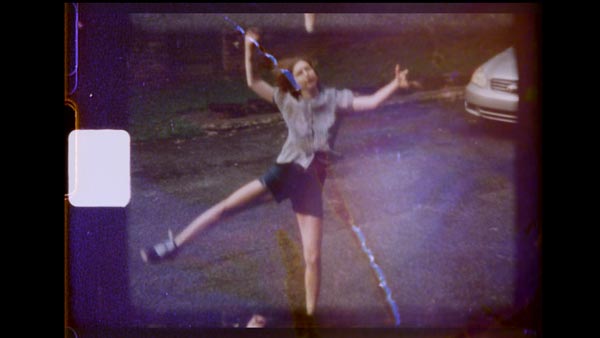
Still from How To Behave At A Party
Nigrin: Why did you use Super 8mm for your film?
Horne: I decided to tackle analog and specifically an avant-garde and experimental approach for this piece because it is outside my comfort zone. Being so used to having to strive for affordability and commercial marketability and being a writer who is driven by narrative and words, I wanted to do something I could be a little more free with my creativity and thematic exploration. That seemed to fit with super 8mm creation.
Heins: I've used Super 8 ever since I was a teenager in the 1960's. (Of course, that was the only game in town back then if you wanted moving pictures) I love the process and the look of film.
MaLo Sutra Fish: The idea was to use super 8 from the get-go. Super 8 is a fantastic format. Not only have you got a texture like no other film wise, but the cameras are very handy, light, and easy to use. It would have been impossible to shoot the same material with 16mm, let alone 35mm.
Why not video? First of all, video captures sound, which is another story when it comes to negotiating capturing live shows because of audio copyrights. The cameras are also more expensive as well as fragile and there’s always a risk when filming a show to have the camera damaged, especially in the pit. I actually had my Canon 514 XL-S damaged during that show, I think an elbow struck the lens and broke down the motor – these Canons are actually notorious for breaking down easily, unlike some other Canon tanks or Super 8 cameras. My Gaf 415 XLM survived just fine. One last but not least reason as to why I used Super 8 Tri-X is because: I want to use film. I wish to film, process and edit myself. Reversal film can handle low lights and easily be pushed during processing, and I don’t mind the grainy aspect it can get either when pushed, I actually like it. I almost have a fetish when it comes to film; I prefer its physical chemistry to capture light, and the freedom given to experiment with it both in the lab and in post-production. My final edit, however, is done on the computer: I still lack the skills and budget to make film copies for the kind of final edit I want. It’s also much easier to have a digital file for distribution and festival applications. I can have the best of both worlds: get the aesthetics I love, process the rolls myself, do all the editing, experimentation and film intervention I want before having it digitized and play some more when editing my work digitally. That being said, I am working on a project for which I plan to have all the editing done analogically with both final film copies and DCP / digital file.
Radomski: I love Super 8 film for many reasons. For one thing, the Super 8 medium has that irrepressible home movie feel to it. I love playing with that sense of nostalgia. I also love Super 8 because the cameras are just so easy to handle. You can take them just about anywhere, and since the camera is so light, there’s no back pain the next morning. And again, Super 8 film was perfect for this project because the film is so delightfully self-contained in its little cartridge. It’s really easy to dunk those bad boys in just about anything.
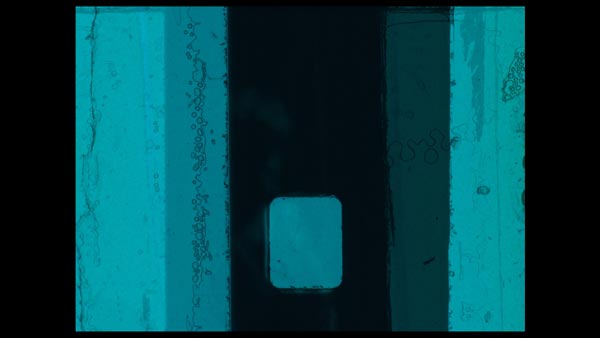
Still from Scum Show
Nigrin: Who do you use to get your Super 8mm materials?
Horne: I created this project through a super 8mm class at Austin School of Film, so the materials were sourced for us by the school for this one, but I know they often use Pro 8mm, and that’s who I’d source from in the future. They are a well-respected place for analog equipment and supplies, that was just a couple blocks from me when I lived in Burbank before moving to Austin. They just celebrated 50 years in business!
Heins: I order my film stock directly from Kodak.
MaLo Sutra Fish: I am a sucker for Kodak reversal films: Tri-X and Ektachrome. But I know ORWO has some great films as well. Being in Paris, I either order on my own from RE:Voir (Pip Chodorov’s shop) or through a group order done with L’Etna members to Kodak and/ or Orwo. That being said, I also buy film from Mono No Aware if in NYC, to support this collective as their prices are just a dollar above Kodak’s pricing. At the moment, films have become crazy expensive in France, so I am loading up whenever I travel to the States. Pro8mm is also where I can get film, they ship all over.
Radomski: I usually buy my film from B&H, but if they happen to be out of stock, I’ll check eBay. That isn’t always a great solution because sellers might decide to jack up the price, but sometimes you can find a good deal, especially if you’re able to buy bulk. I also love Mono No Aware. They sell film stock at very reasonable prices, and they offer lots of incredible analog workshops. Since they weren’t able to do in-person workshops during the pandemic, they ran a series of virtual workshops live via Instagram. Those did a lot to sustain my sanity during that time. Although I’ve used a handful of labs for film scanning over the years, my new favorite is The Negative Space, which operates out of Littleton, Colorado. Nicki Coyle does amazing work, and her prices are a serious lifesaver. A few months ago, before I knew about this lab, I’d been seriously questioning how much film I could afford to shoot in 2023. I thought I might have to put certain projects on hold indefinitely, which was really, really depressing. But now that I know about a lab that’s near my home and priced very reasonably, I’m ready to go crazy with Super 8 and 16mm this year. That lab has been a game-changer for me.
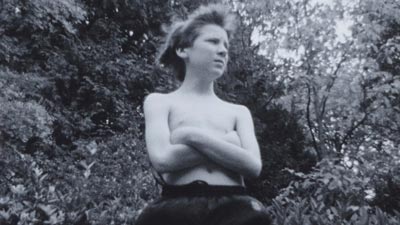
Still from Sam Now
Nigrin: Will you continue shooting in Super 8mm in the future?
Horne: Yes! While most projects I do will probably continue to be digital, I want to do more super 8mm work and my next 8mm goal is to get a great concept and team in place to create an entry to the straight 8 festival where it is all in-camera edits. That’s a challenge I want to take on sometime later this year.
Heins: Yes, as long as film is available.
MaLo Sutra Fish: Yes, of course. As I said above, I am a film filmmaker. I do film photography and shoot film whenever I can. I want to keep shooting music videos using Super 8 and explore all of its possibilities. I also have a fiction project (mentioned above) that I plan to shoot in Super 8mm and 16mm. It’s a collaborative project with Isao Yamada, a Japanese filmmaker who is a Super 8 master. He edits everything analogically and has been shooting Super 8mm for over 40 years. I strongly recommend diving into his filmography. He and I both share the love of the film itself, its imperfect beauty, its eeriness, its colors and contrasts, as well as the love for those cameras, which can be little cinematographic gems which engineering made them so easy to use. Bam! Just grab’em and film whatever you want (given you know a thing or two about lighting). And all cameras are worth it, may it be the cheap ones as well as the more expensive/ pro models. I bought my Gaf 415 XLM for 30 bucks at Re:Voir. My first film, This Little Light of Mine (2021) was filmed using a disregarded Elmo F20 S-XL that had its lens scratched, which resulted in capturing diamond shaped flares. Super 8mm is not just a cheaper format compared to 16mm or 35mm, it’s a format of its own, with an aesthetic of its own that immediately evokes memory, souvenirs; it’s a specific visual tool that cinematographically recalls images we made by our brains. Besides, any imperfections from either the camera or the film can be sublimed. It’s truly a wonderful format to work with.
Radomski: Hell yes.
The 35th Annual United States Super 8mm Film + DV Festival, which is part of the Spring 2023 New Jersey Film Festival, will be taking place on Saturday and Sunday, February 18 and 19, 2023! All the films will be available virtually via Video on Demand for 24 hours on their show date. The in-person screenings will be held in Voorhees Hall #105/Rutgers University, 71 Hamilton Street, New Brunswick, NJ beginning at 5PM on their show date. Each ticket is good for both the virtual and the in-person screenings. Tickets: $15=Per Program For more info go here: https://watch.eventive.org/newjerseyfilmfestivalspring2023
Albert Gabriel Nigrin is an award-winning experimental media artist whose work has been screened throughout the world. He is also a Cinema Studies Lecturer at Rutgers University, and the Executive Director/Curator of the Rutgers Film Co-op/New Jersey Media Arts Center, Inc.







